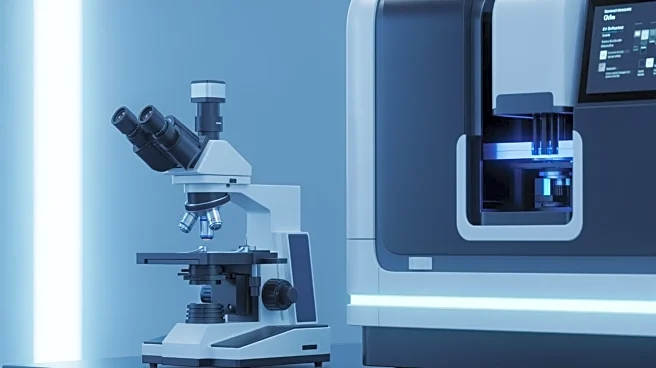What's Happening?
The Massachusetts Institute of Technology (MIT) has introduced BoltzGen, an advanced AI model designed to enhance drug discovery by expanding the druggable universe. BoltzGen builds on previous models
like Boltz-1, which achieved significant accuracy in predicting the 3D structure of biomolecular complexes. The new model advances from structure prediction to therapeutic design, accommodating various formats such as nanobodies and peptides. It targets a wide range of molecules, including nucleic acids and proteins. The model is available under the MIT license, allowing commercial use. A network of 26 academic and industry collaborators is currently validating BoltzGen's designs, with promising results in areas like cancer therapy and antimicrobial action.
Why It's Important?
BoltzGen represents a significant leap in AI-driven drug discovery, potentially transforming how new therapies are developed. By offering a universal language for binder design, it addresses the limitations of current models that are often restricted to specific modalities. This innovation could lead to breakthroughs in treating diseases with previously undruggable targets, thereby expanding the scope of therapeutic interventions. The model's ability to generalize across diverse targets suggests a future where drug discovery is faster and more cost-effective, benefiting pharmaceutical companies and ultimately patients by accelerating the availability of new treatments.
What's Next?
As BoltzGen undergoes further validation, its impact on the pharmaceutical industry could be substantial. The model's success in identifying binders for previously untargeted proteins may lead to new drug candidates entering clinical trials. Stakeholders in the biotech and pharmaceutical sectors are likely to monitor these developments closely, as the model's open-source nature allows for widespread adoption and adaptation. Future updates and enhancements to BoltzGen could further refine its capabilities, potentially setting new standards in AI-driven drug discovery.
Beyond the Headlines
The introduction of BoltzGen also raises ethical and regulatory considerations. As AI models become integral to drug discovery, questions about data privacy, intellectual property, and the transparency of AI-driven decisions will need to be addressed. Additionally, the model's ability to design de novo binders not found in nature could lead to debates about the safety and long-term effects of such innovations. These discussions will be crucial as the technology continues to evolve and integrate into mainstream pharmaceutical research.











